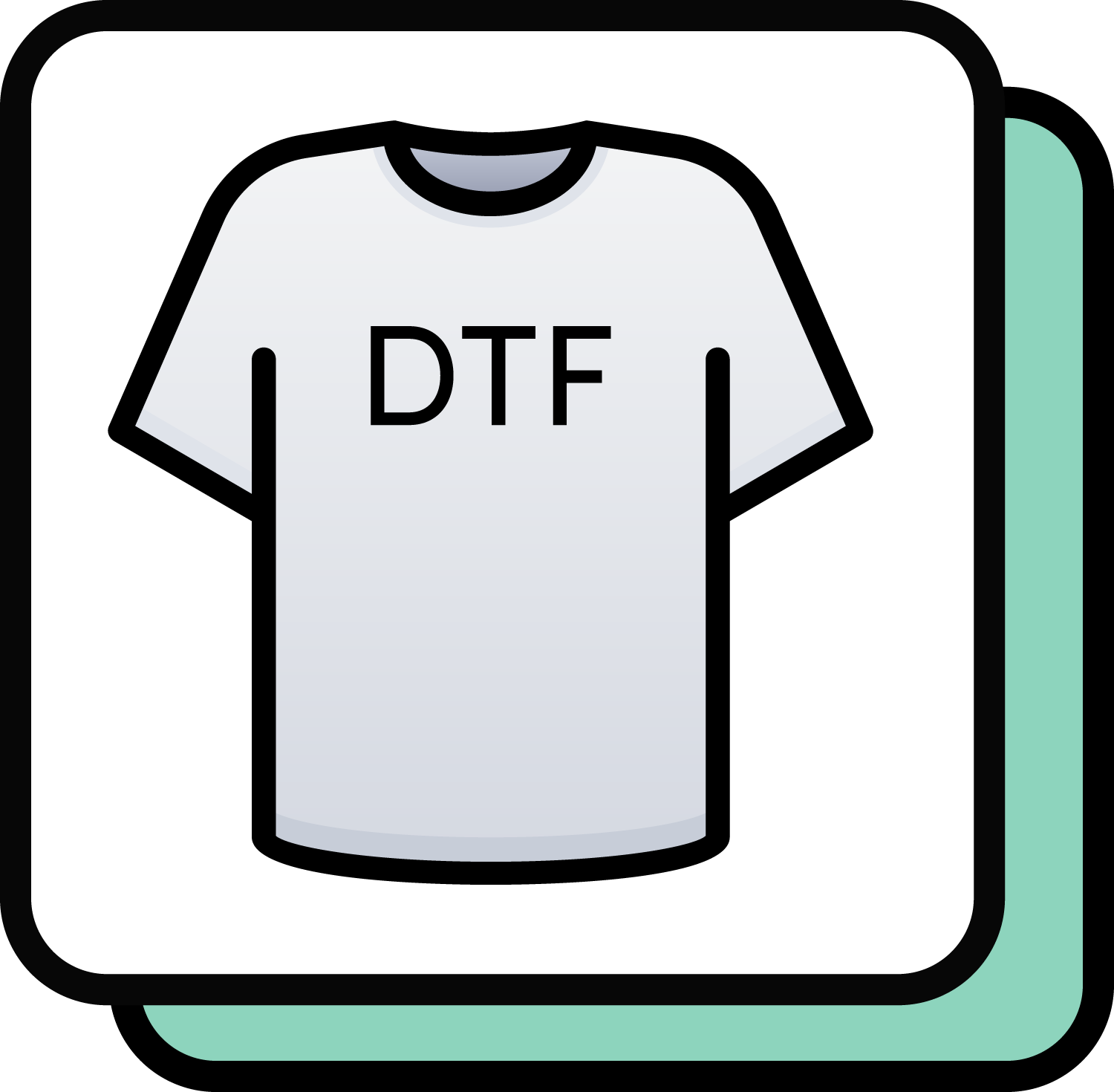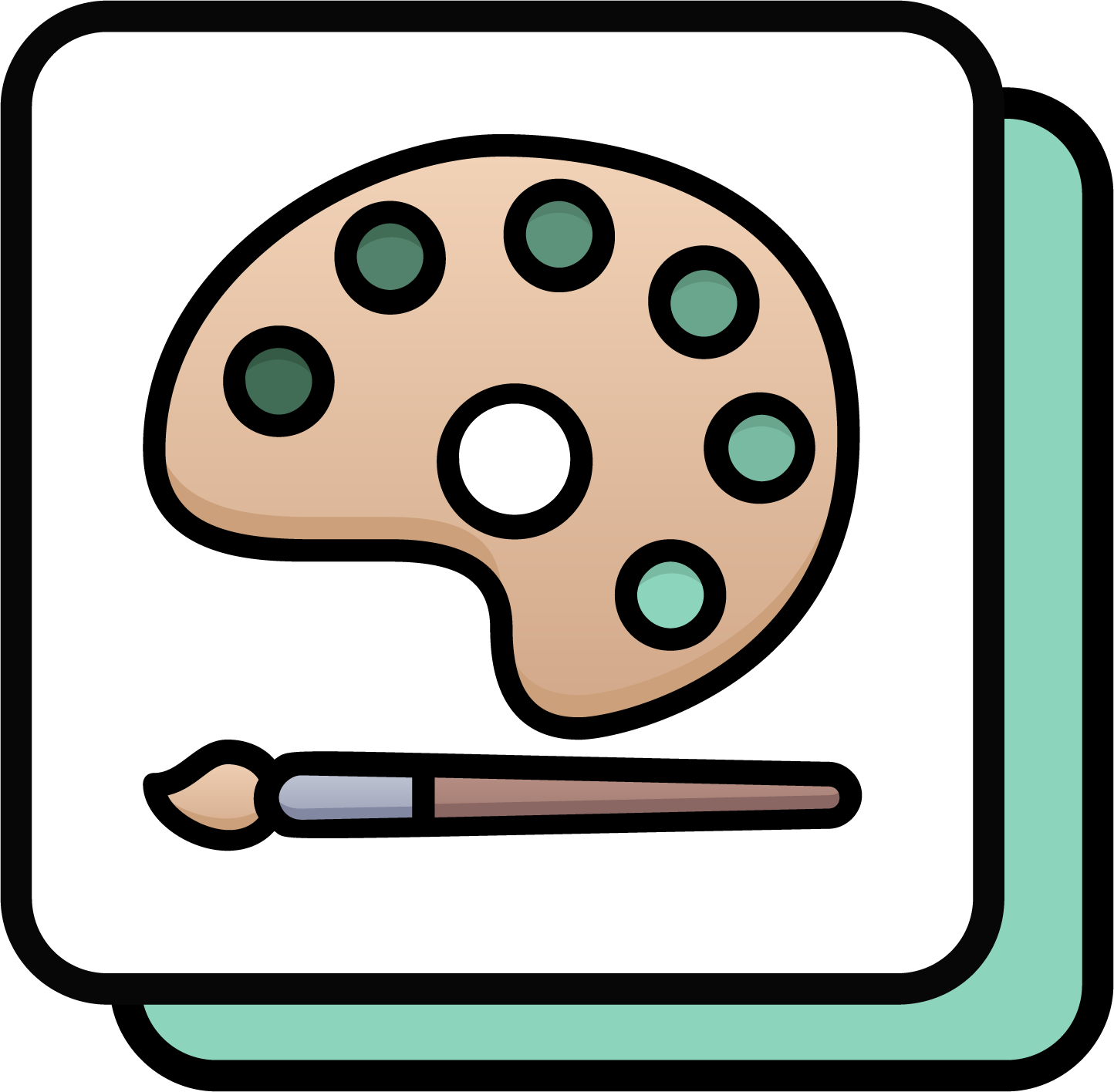DTF (Direct-To-Film)

Application
This technology partially replaces DTG technology. One of the advantages of avoiding the priming process is the reduction of pressure marks. It is also great that you can get a relatively even print, regardless of the quality (surface smoothness, material thickness) of the garment.
Wider options when choosing a press position. It is mostly used for the production of various cotton or cotton and polyester clothes: T-shirts, sweaters, bags, etc.
Special glue is used for adhesion - in the presence of cotton, the glue is easily absorbed into the material. Unfortunately, production on synthetic surfaces is more complicated - it does not always adhere effectively to jackets, vests and similar clothes.
Advantages:
- Addresses certain bugs in DTG printing.
- Relatively inexpensive and at the same time high-quality printing method.
- Suitable for the production of small and large quantities (from 1 unit)
- Large quantities can be produced in a relatively short time.
- Fine details, various colors are extracted, color drawings can be printed.
- The press is characterized by high durability and elasticity. Does not crack when washing.
- Excellent for production on most cotton-based fabrics, regardless of their quality.
- A vector file is not required.
- Pleasant to touch surfaces.
Disadvantages:
- As this is a new technology, there are some unforeseen issues.
- A thermal press is used during pressing, so there are faint marks (they disappear after washing).
- It is less suitable for production on synthetic fabrics.

File requirements
A high-quality .png file without a background is required for production. RGB color mode is required.
The picture must correspond to real dimensions and a resolution of 300 dpi.
Normally, printing works best with a file of at least 3500x3500 px.
There must be no empty space on the sides of the file so that we can select accurate dimensions when printing.
In order to obtain perfectly matching colors, please order a test production or select colors in the press file according to our printed palette. Each device prints differently, so we cannot guarantee that the image will match the one seen on the computer screen.
Production process
With proper production planning, DTF technology can be considered one of the fastest. Although it requires preparation, it is possible to do the preparation in 1 day or less and at the same time make a considerable amount of clothes. The preparation is similar to thermal printing - first the print is made and only then pressed.
-
We upload the file provided by the client to the printer program and select the dimensions and quantities, determine the intensity of the dye. We select larger amounts of files and only then print.
-
We print designs on special DTF film. This film acts as a carrier.
-
The printed design is sprinkled with a special powder - glue.
-
The powder is heated in the oven and melts, forming a solid layer on the inside of the press. Later, this glue will help the print adhere to the surface of the fabric.
-
We cut the printed designs and prepare them for transfer to the garment.
-
We place the garment on the thermal press, determine the position and after choosing the optimal temperature, time and compression strength, press the print.
-
We wait for the design to cool down and carefully peel off the carrier film.
-
The finished garment is steamed to reduce pressure marks.
